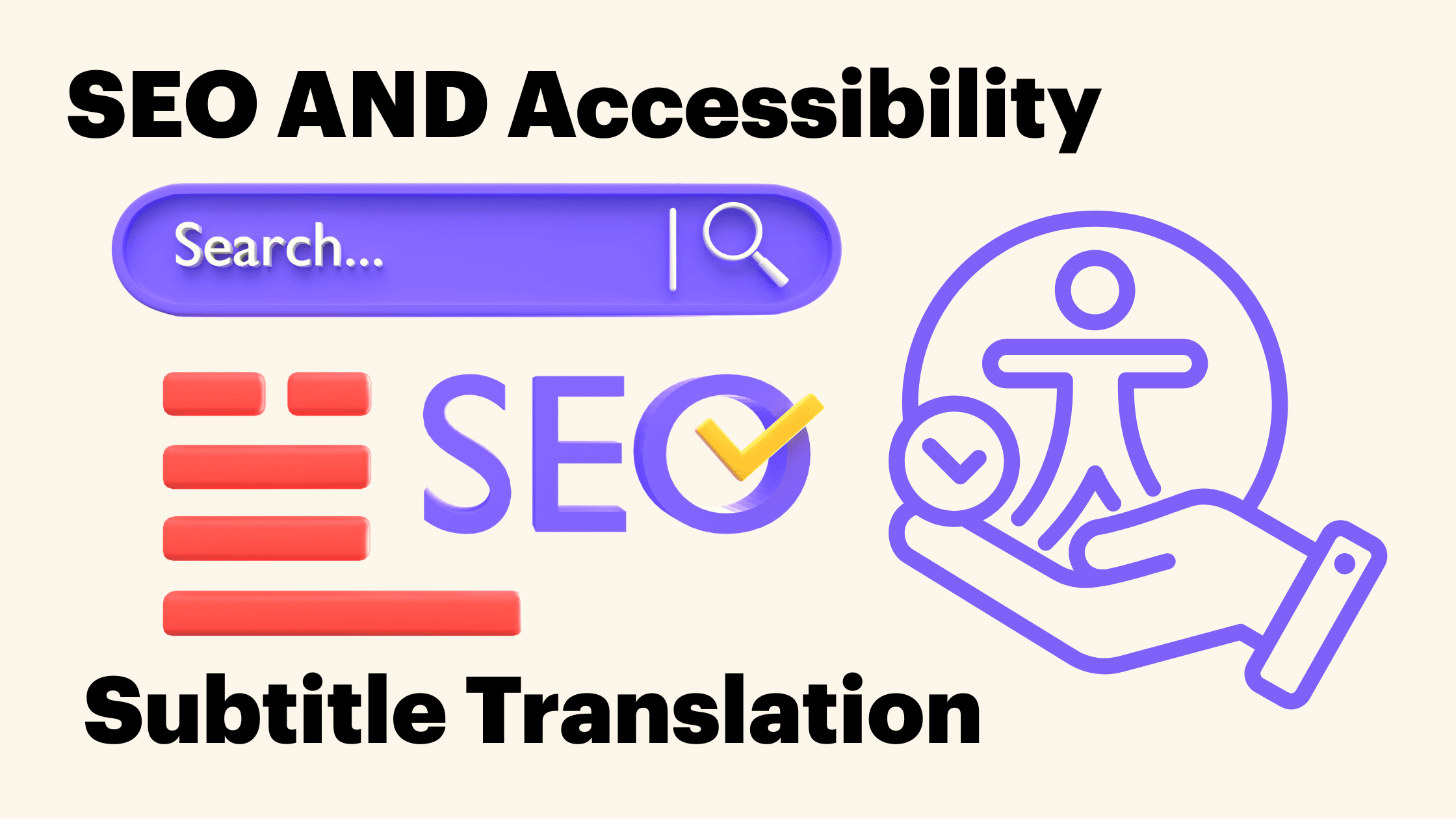Introduction

SRT Files: The New Communication Tools for All
The Rise of SRTs as a Universal Format
Though simple and structured with timecodes, Sub Rip Subtitle (SRT) files have gained their universality as formats for subtitle exchange, for they also allow wide compatibility of SRT files with virtually all video players and platforms. Each SRT file is typically assembled into an ordered list of subtitles, each end timestamp is provided with the accompanying time code and the text. It is well known as a standard format for media localization which has separation of timing from content, thereby enabling fast and precise editing and smooth integration.
Subtitle Translation in the Global Era
Its importance becomes glaring in 2025. No longer an option but a must for brands and content creators-that is subtitle translation in this new global scenario of content traveling across streaming platforms, social media, and e-learning portals. Audiences expect their videos not only to be well translated but also well-timed. Subtitles close the gap between the creator and the many different audiences worldwide.
How SRT Translation Bridges Language Barrier
That's where SRT translation comes-in spotlights the opening of the single-language subtitle file into a plethora of regionalized variants, without disturbing the timing or quality of the video. The text in the subtitle will be translated inside the original SRT structure so the content can be repurposed efficiently and consistently in different markets for greater access and at the same time, sustaining the original timing to form proper synchronization and user experience.
Why SRT Translation Matters in 2025
In the global digital landscape, the winds of change blow strong, with AI, multilingual streaming, and hybrid content consumption paving the way. In this new environment, delivering content in the language of your audience becomes colossal. SRT translation ensures your subtitles follow not only the literal sense but cultural sense, regional idioms, and context-based messaging.
Additionally, subtitles are an excellent tool for SEO. Subtitle text, especially on platforms such as YouTube and Vimeo, can be indexed by search engines these days. Well-structured and translate SRT files mean better discoverability, longer watch times, and higher engagement for content. Companies that can effectively SRT translate will see vast increases in their global footprint and customer trust.
Features of Good Quality Subtitle Translation

Clarity and brevity lend an equally important voice. They must not only be easily readable but actually graspable within limited time. Conclusively, a perfect SRT translation does not only port linguistically accurate translations, but also adjusts breaks, character count, and reading speed according to regional standards and that of platform regulations. These refinements can be all that separates subtitles doing well from those that actually confuse or detract the viewers.
Choosing the Right Tools for SRT Translation in 2025
AI and language technology have developed so fast that the number of tools available for SRT translation is multiplying day after day. Meeting all the best integrations in 2025 are machine learning, real-time collaboration, storage in the cloud and multilingual support, which offer seamless yet scalable subtitle solutions.
Most modern SRT translator platforms come with features such as automatic timecode preservation, context-sensitive translation suggestions and in-platform proofreading facilities that would require minimum manual intervention while speeding up subtitle production. Several multiple solutions have integrated directly to popular video editors, CMS necessitating localized software to create an end-to-end workflow better suited for various content needs.
Cloud Subtitle Platforms The New Standard
The paradigm shift creates an even more important, if not totally synonymous trend, in terms of world-of-2025 popular cloud-based subtitle translation platforms. These allow teams to have focused access to idiomatic languages since they are all equipped with updates in real time coupled with collaborative editing capabilities anywhere, regardless of time zone or location. Cloud platforms remove the need for local software installation, company easy version control, and allow for increased resource linking and scaling.
For those who regularly translate SRT files, there have been various cloud tools equipped with automation features that keep efficiency high and standards high too. Features such as automatic syncing, preview playback, and built-in quality assurance make it much easier to manage extensive projects with imminent deadlines without sacrificing reliable performance.
AI-Driven Engines for Translation of SRT Files
AI-assisted translators for SRTs have come a long way, providing translations that consider context, emotional impact, and style consistency. Tools such as these, based on neural networks and large language models, can interpret idioms, metaphors, and slang; their output is often close to human language proficiency level. Machine translation has never truly replaced human prowess and remains a reasonable basis for understanding subtitle localization. As of 2025, best practice will include using AI to translate subtitles, which would be followed by human editing. With that, speed, accuracy, and cultural elements key to the audience's satisfaction are ensured.
Subtitle Quality Control Keeping It Real for All Languages
Subtitle quality must be preserved in every SRT translation. Time codes, spelling, or meaning errors spoil the whole experience for the viewer and injure the brand. The quality control mechanism relies on an effective combination of automated solutions and a native-speaker review.
For a contemporary translation environment, various forms of such tools are integrated into the computer-assisted translation system and help ensure quality by flagging subtle potential issues including overlapping time codes, spelling mistakes, or subtitle lengths that are too long. With the integration of such tools, you can make sure that the translated SRT files meet both linguistic and technical standards required for global distribution.
SEO and Accessibility Subtitle Translation

Of course, another major point is accessibility. The subtitles read and hear from around the world through translated subtitles. By 2025, it would not be just an expectation of users and regulators; it would be a part of regulations that every site across the globe would need to abide by. Good subtitles would let their contents go global with their accessibility features.
Integrate SRT Translation into Your Workflow
Integrating SRT translations into their regular content production and localization workflows is what businesses require for consistent value from SRT translations. This means incorporating the whole localization process of subtitles as part of the project's video pipeline, from drafting and recording to main editing and then publishing.
Efficient workflows involve the automated tool for extraction of files, AI-assisted machines for translation, and the assignment of human translators or reviewers for localization quality. Some platforms also allow direct publication of translated SRT files for video hosting service, thus speeding up the distribution process. By integrating the entire subtitle workflow into the content strategy, a consistent and scalable model for international growth is made, guaranteeing that every video one publishes can reach its global audience.
Challenges & Solutions in SRT Subtitle Translation
Despite there being many advanced tools and technological solutions to aid SRT translator, there remain several issues to consider. Anything else could spell disaster in terms of linguistic accuracy, idiomatic expressions, and cultural nuances. Synchronizing the translated text with the timing for the video is also something done manually and seems to require an inordinate amount of time.
The answer lies in the amalgamation of human intelligence and technology. It is here that AI is capable of drafting these translations in the first instance while suggesting context-related translations and performing checks for inconsistencies in formatting. A human translator will need to take care of cultural considerations and editorial judgment in presenting high quality subtitles.
Using a collaborative platform that supports live editing, team communication, and real time previews can dramatically reduce turnaround time while secure accuracy. With the right combination of automation and human touch, even the most complex subtitle projects become manageable and scalable.
Outlook toward Future Trends in SRT Translation
Multimodal Smart AI
With a hopeful future ahead, there seems no slowing down in the evolution of subtitle translation. Multimodal AI models that sense audio and visual inputs are now part of SRT translation platforms, enabling accurate and contextually aware subtitles based on tone, emotion, and situation.
Live Content Real-Time Subtitle Translation
Real-time translations of subtitles have become surprisingly mainstream- especially with regards to live events. With most global happenings taking place now, and considering online conferences with e-learning webinars, the real-time translator widens participation and the audience. This enables viewers to immediately download the material into his or her most used language, obliterating barriers instantaneously across communication.
Experience with Customized Subtitling
Just as exciting is personalization in this area. In the near future, such viewers may be offered the options for subtitle translation according to a particular regional accent, personal reading or comprehension style-or even level of literacy; thus, really improving user experience and participation. Such individualized subtitle features will carry forward content into the fold of being understood across cultures and languages.
Best Subtitle Practices to Follow for Successful Projects

Keep and adopt a style guide and glossary for consistency across languages and videos. Train your translation team regularly or hire experienced professionals knowledgeable in the industry and target markets. Most importantly implement quality assurance processes which perform both technical checks and linguistic reviews. With the above-mentioned best practices in place, your efforts in the subtitle translation process will pay off musically, tangle free, accurate, and relevant to the very ends of the earth.
Conclusion: Maximizing the Power of SRT Translation
In the day and age where global communication can be done without barriers through the web, SRT translation is no longer considered a technical task, but a very strategic asset to leverage. It helps businesses, creators, educators, and broadcasters break the barriers of languages, improve accessibility, and tap into new markets. With the right tools/subtitle translating methods and well-placed mentality, subtitle translation needs to seamlessly become part of the lifecycle of your content.
By preferring intelligent SRT translators, doing automation, and investing in human amazing expertise you can achieve and get subtitle translations which will upgrade and clean your content and engage wide audiences around the world. Doesn't matter if your goal is to translate SRT files for marketing, education, entertainment, or anything, the approach you take in 2025 will shape how your message is received and remembered on a worldwide scale.